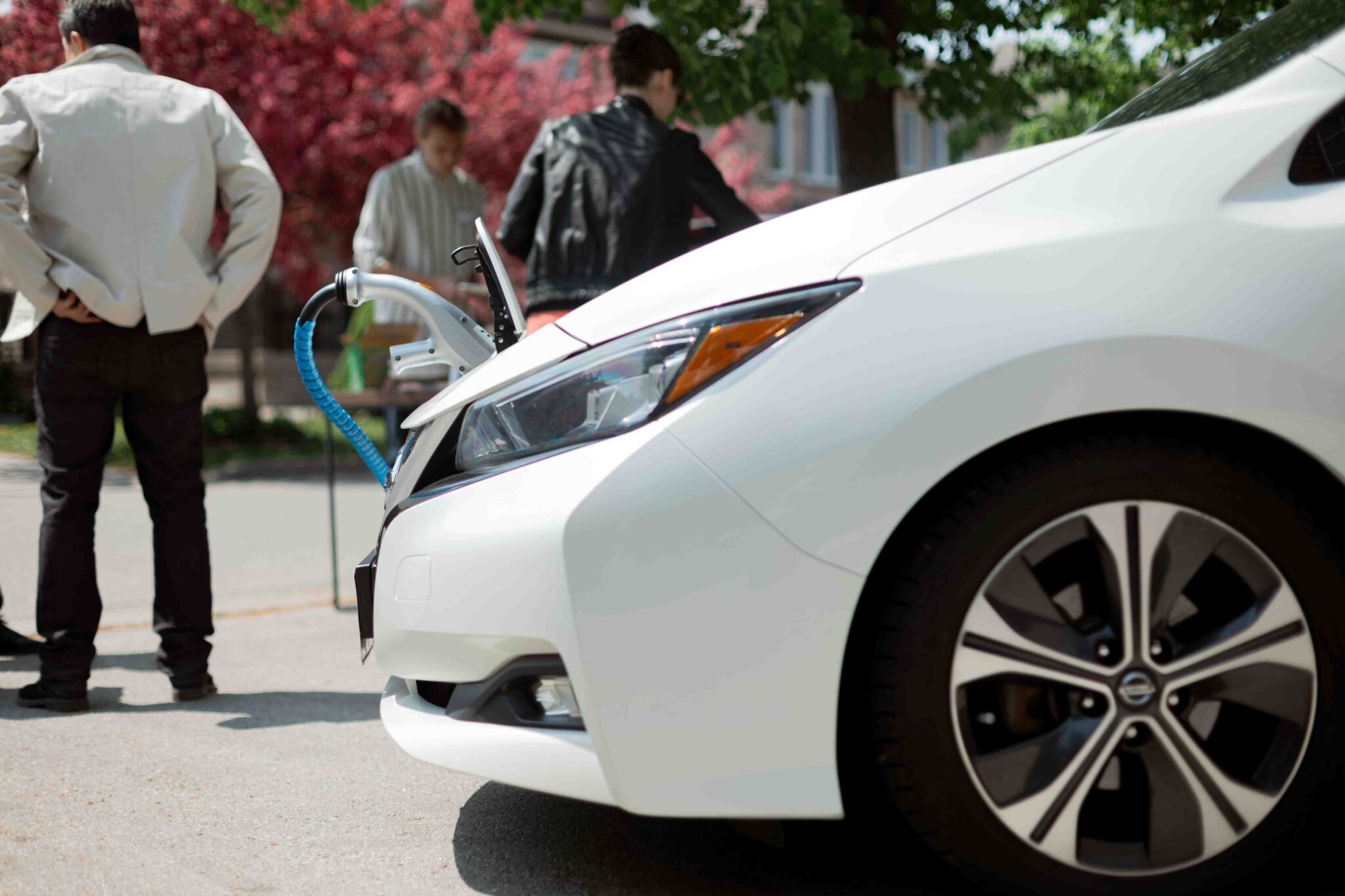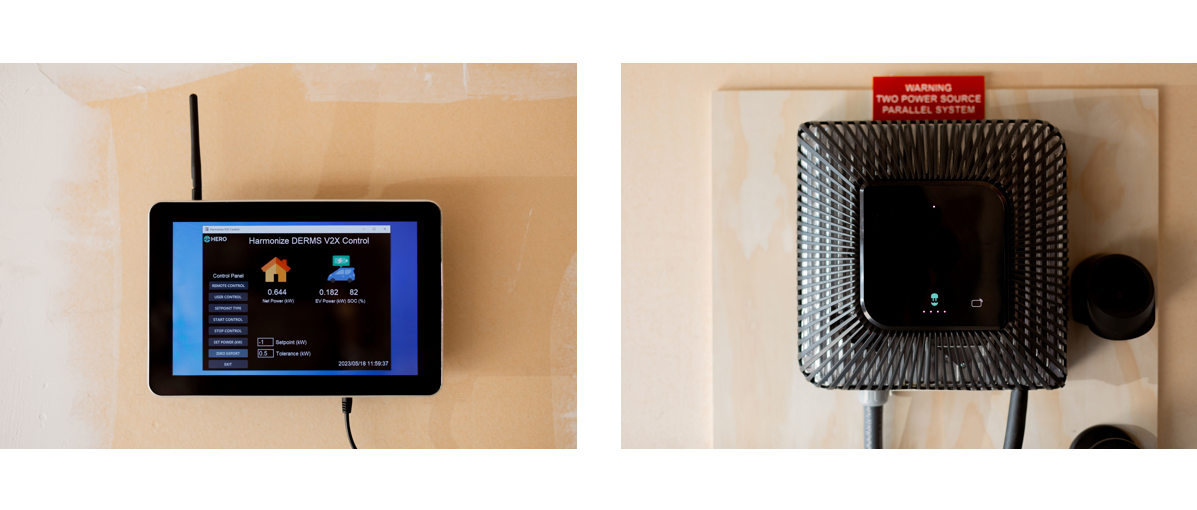Exploring Vehicle to Grid Capability in Halifax/Kjipuktuk through Education and Outreach
Volta Research’s project is investigating the performance of a vehicle-to-grid (V2G) charging station at a multi-unit residential building in HRM as well as a portable charging station. The demonstration project will assess the performance of V2G charging, including its potential to reduce greenhouse gas emissions, as well as other co-benefits such as resiliency from power outages.
Grant award: $50,000
The transition to net-zero emissions requires rethinking how we use basic parts of our infrastructure. Take cars for example. There is a huge push right now towards electric vehicles (EVs) to reduce greenhouse gas emissions. What if these EVs were more than just a lower carbon way to get from point A to point B? What if EVs became integrated with the electrical grid, and could help solve one of the biggest barriers to a green energy grid: storing clean energy for use when it is needed? And on top of that, what if they could supply back-up power during power outages?
Volta Research, a group that is investigating battery and energy storage technology, has been exploring this idea by developing and testing use cases for vehicle-to-grid (V2G) technology. With support from HCi3’s Accelerating to Zero grant, they were able to test this technology to demonstrate its energy storage, GHG mitigation, and emergency power efficacy, and provide a push to address, update, and improve existing policy gaps.
Leigh St. Hilaire, Executive Director at Volta Research, explains: “To just use [an EV] as a vehicle to move around… really misses a giant portion of its contribution… to our goals of decarbonization.” Shifting to EVs means a shift in how our energy is stored; it will no longer be centralized at gas stations, but instead localized at homes and businesses. The car will become part of the home, like another large appliance. “So, you have to think [about] how all [of] these things work together… That’s our scope in this organization: dealing with niche-ish problems that we thought were getting away from policymakers.”
V2G technology allows energy to flow in two directions: from the grid to the EV, and back from the EV to the grid. V2G unlocks the hidden potential of the EV battery as a tool for energy storage and backup for buildings and homes during power outages. When asked what the goal of this project was, St. Hillaire said, “it’s a bit about the efficacy, and a lot about showing what can be done.” By increasing awareness of this technology and its potential, they’re hoping to engage with policymakers and governing bodies to make sure that V2G is being considered in future decisions about grid infrastructure.
They’re currently testing two types of chargers: one is a V2G charger installed in a building at the Nova Scotia Community College, and one is a mobile charger called ‘vehicle-to-load,’ or V2L, which is “kind of like a suitcase,” says St. Hilaire. “You can throw it in the back of a car and take it someplace that needs power. Plug [the V2L] into the car, and the car can supply power to a bunch of things.” The mobile unit could provide support to communities without “backstops” in place during significant weather events, addressing some of the energy equity issues that are, and will continue to be, exacerbated by the climate crisis – especially as we move towards electrification of buildings. Individual and publicly owned EVs will be able to help different communities and buildings during power outages, by deploying vehicles to those locations and ensuring that everyone is safe during these events.
A major benefit of V2G-enabled EVs is the ability to store renewable energy during its peak production hours, and discharge it when the wind isn’t blowing or when it’s dark. This increases the renewable energy portion of the energy grid mix and decreases the need for back-up fossil fuel production, which is instead provided by the batteries in EVs. Volta estimates that V2G-enabled EVs will produce at least 20% fewer emissions than non-V2G-enabled EVs. Though the transition to 100% EVs will result in estimated savings of 9.5 megatonnes of CO2 over 20 years, enabling V2G technology in EVs will result in additional savings of 2.5 megatonnes.
These estimates rely on assumptions about the growth of EV sales and the impact of federal and provincial targets, as well as the HalifACT plan which aims to have 100% new EV sales by 2030. Even if these assumptions change over time, it’s clear that enabling V2G technology as EVs become mainstream will result in even more GHG reductions and improve the capacity of the electricity system.
A coordinated effort between industry, municipalities, and the province is needed to clear a path through the current administrative and technical barriers preventing widespread use of V2G. This project is the beginning of what will hopefully be a series of changes made to our electricity ecosystem to work through these barriers as we continue to transition to a net-zero economy.







